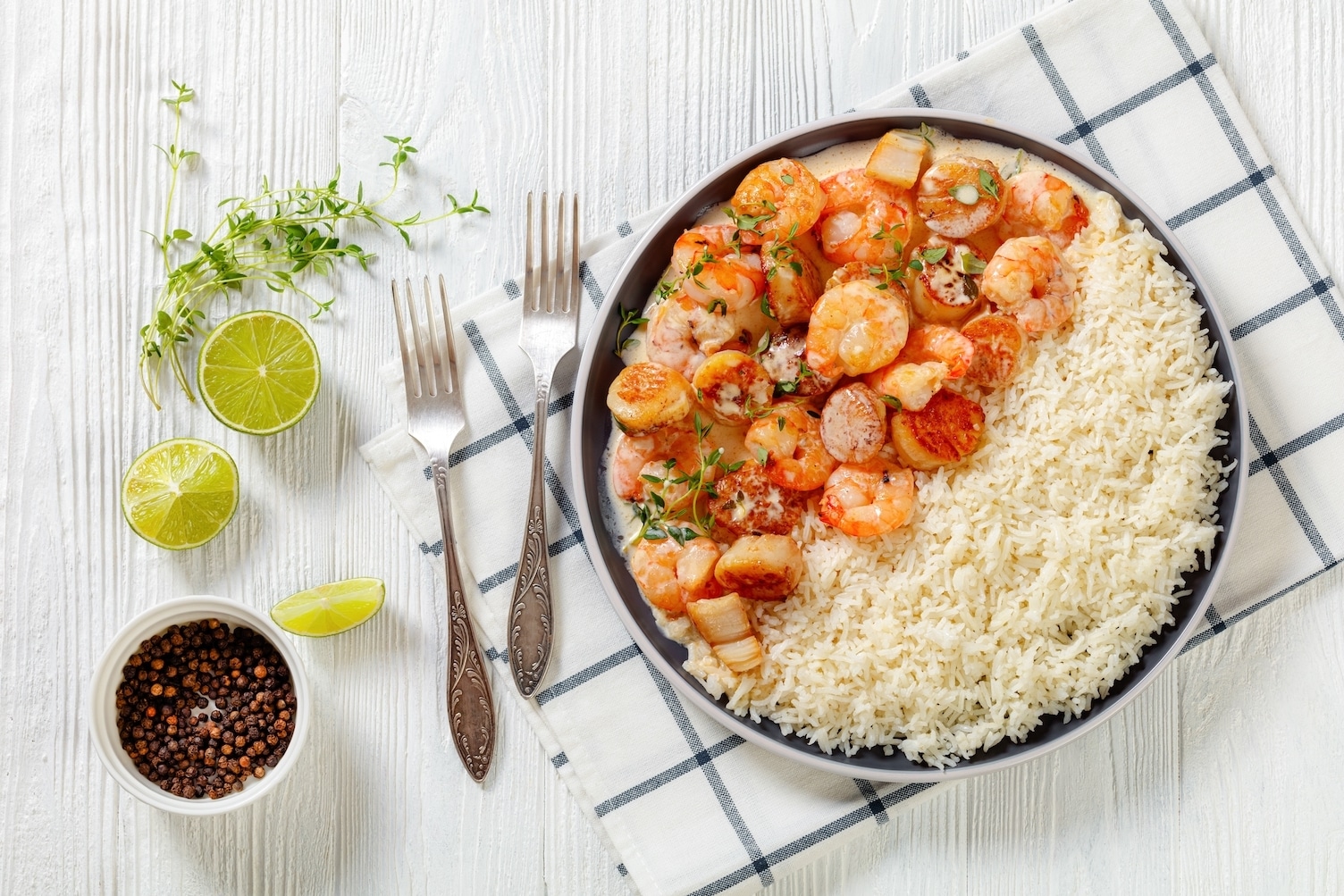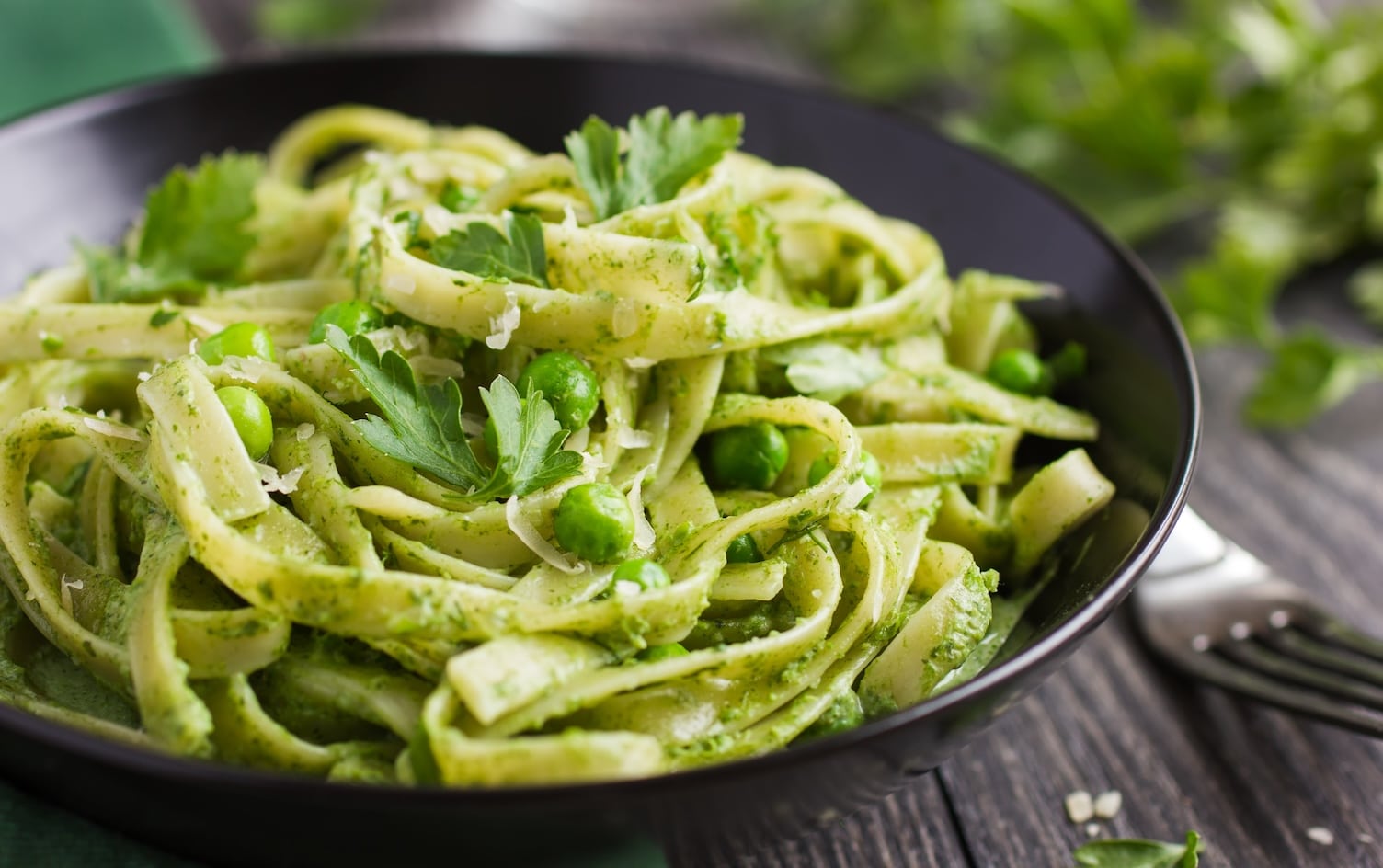Every day, the world needs to feed over 8 billion people. Thanks to technological advancements, it’s possible — but it comes at a cost. The production process needed to grow and get food from farm to table negatively impacts the environment. This leads to air pollution, greenhouse gas emissions, excessive water usage, deforestation, and soil erosion.
If you’re concerned about food and climate change, you may want to be mindful of your food’s carbon footprint. Keep reading to learn about the ecological impacts of common foods and which foods are better for the planet.
7 Foods With High Environmental Impact and Their Alternatives
You can make meaningful climate-conscious changes to your diet by swapping out a few high-impact food items.
1. Prawns and Shrimps: Swap for Mussels
The average American eats almost six pounds of shrimp each year. Collectively, that’s over 2 billion pounds being consumed in the U.S. annually. Most of that shrimp has to be imported from fish farms in India, Ecuador, and Indonesia.
Sure, these farms produce enough shrimp to meet demand and keep prices reasonable. But the environmental costs might make you rethink how much shrimp you buy. Shrimp farms can:
- Destroy mangroves — trees and shrubs that live on coastlines and support coastal ecosystems.
- Negatively affect water quality, reduce biodiversity, and damage marine habitats.
- Lead to harmful algae blooms that block light and kill off aquatic life in nearby waters.
To cut down your environmental impact: Opt for mussels. They’re a tasty alternative to shrimp in seafood dishes and have plenty of protein. Even better? Mussels actually have a net positive impact on marine environments! These shellfish extract nutrients from the water to sustain themselves. They’re so efficient at that task that they can remove excess amounts of nitrogen and phosphorus, which makes the water healthier for other marine life.
2. Beef: Consider Plant-Based Proteins or Poultry
It’s no surprise that the environmental effects of meat production are significant. From a climate perspective, beef is one of the worst meats you can eat.
- Beef production requires a lot of space, which results in loss of habitat for other species and deforestation in some regions.
- Producing just one kilogram of beef creates 70 kilograms of greenhouse gas emissions. Cattle farming — for both milk and meat — is the largest source of agricultural emissions globally.
To cut down your carbon footprint: Switch beef with chicken. Chickens emit far fewer greenhouse gasses than cattle, though they do have a slightly more damaging effect on water. Runoff from chicken farms can carry water-polluting substances like phosphorus.
Or you could consider switching to plant-based foods. Cultivating plants is more ecologically sound than producing animal products. Soy and beans produce a fraction of the greenhouse gasses that livestock create. Legumes, which are used in plant-based meat substitutes, may even offset some emissions.
It’s important to note, though, that plant-based meats may not offer the same nutritional value as meat. Plant proteins usually lack some essential amino acids unless you choose quinoa, soy, or buckwheat. Additionally, some plant-based products may contain more fat for taste.
3. Chocolate: Try Cacao-Free Chocolate or Sustainable Brands
Chocolate is the most popular sweet in America. The planet may not love chocolate as much as the rest of us, though:
- The cacao beans, sugar, and palm oil that are used in chocolate are responsible for deforestation, particularly in vulnerable rainforest regions.
- Adding milk to chocolate complicates the issue even more since raising cattle is another environmental hazard.
You don’t need to give up chocolate entirely for the sake of the environment. Just be more thoughtful in your chocolate-buying habits.
To cut down your environmental impact: Look for fair-trade chocolate products, which typically come from ecologically responsible growers. You can also try cocoa-free chocolates, such as WinWin or Voyage. These new products aim for the flavor and texture of traditional chocolate without the harmful effects of cacao farming.
Also Read > Celebrate Earth Month with MyFitnessPal’s free Eat Green Plan
4. Cheese: Swap for Plant-Based Cheeses
Cheese is another food that contributes to the environmental damage of cattle farming.
- Both dairy cows and beef cows require the same kind of land and water resources.
- Cattle also produce greenhouse gasses as part of their digestive process. To get the milk needed for cheese, dairy cows have to graze and pass methane gas all day long.
To cut down on your environmental impact: Opt for plant-based cheeses. They’ve come a long way in recent years. Now, they rely on milk substitutes from cashews, soy, or macadamia nuts, all of which are easier on the environment than cattle.

5. Rice: Consider Eco-Friendly Whole Grains
Of the commonly cultivated food crops, rice has the greatest effect on greenhouse gasses. The process of flooding rice fields to prevent weeds leads to rapid plant decay, which emits methane gas.
To lessen your environmental impact: Try switching to whole grains such as barley, whole wheat, farro, or quinoa to reduce the environmental impact of your diet. These crops don’t produce the same level of greenhouse gasses as rice. They also have more dietary fiber than rice and offer different flavors and textures to meals.
6. Soybean and Palm Oil: Try Responsibly Sourced Coconut Oil
Soybean oil and palm oil are found in a lot of prepared foods. The trouble with the widespread use of these oils is that:
- Producing them has significant negative effects on the areas where they are grown.
- Farming oil crops is correlated with loss of habitats, including forests, savannas, and grasslands, decline in biodiversity, increased fire risk, water quality changes, greenhouse gas emissions, and even human rights violations.
Coconut oil is sometimes presented as a substitute for palm and soy oils, but even that raises concerns. A highly debated 2020 study suggested that coconut cultivation had an oversized negative effect on biodiversity. Coconut farming supporters say that, unlike other tropical oils, coconut farming is about more than just oil. Coconut trees offer a host of other byproducts, including coconut water, coconut milk, and activated charcoal.
To lessen your environmental impact: Use moderate amounts of coconut oil. It’s probably the best option but moderation is the key. High quantities of saturated fats like the kind in coconut oil are linked to increased risk of heart disease.
7. Coffee: Swap for Tea
Coffee is another much-loved product with a serious impact on the planet. Growing coffee can:
- Lead to habitat destruction and deforestation in coffee-producing regions.
- Generate carbon emissions by shipping around the world.
Cultivation and processing of tea is less damaging to the environment. A comparative analysis of coffee and tea production impacts from 2023 estimates that the process required to make coffee produces 2.5 times the greenhouse gasses of producing tea. The same study notes that tea cultivation only requires 25% of the amount of water that coffee cultivation demands.
To lessen your environmental impact: Fill up your morning mug with tea instead of coffee. It’ll help reduce your carbon footprint and impact on water usage.
Reduce Your Environmental Footprint With Better Food Choices
A lot of foods that are good for the environment are also good for you.
Plant-based foods are a healthy alternative to meat and full-fat dairy.
Cutting back on oils can improve your heart health.
Adding more whole grains to your diet can help you cut your cholesterol and reduce the risk of certain cancers.
You can use MyFitnessPal to find nutritional information and calorie counts for environmentally friendly foods, as well as recipes and meal ideas using climate-conscious ingredients.





